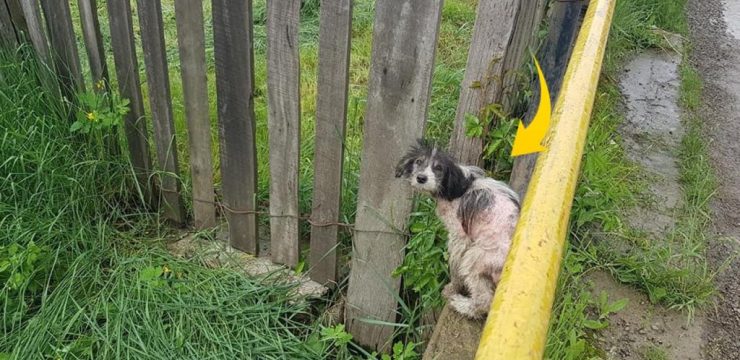When nature’s strength surpasses human readiness, disaster often follows close behind. That’s exactly what communities along several major rivers have experienced in recent days—a heartbreaking sequence of buildings collapsing, riverbanks crumbling, and floodwaters submerging entire neighborhoods. What started as days of persistent rainfall has now become one of the most severe flooding events in years, revealing deep flaws in infrastructure, planning, and environmental management.

For generations, these riverside areas were celebrated for their scenic beauty and tranquil flow. Families built homes nearby, businesses thrived along the banks, and visitors came to enjoy the calm rhythm of the water. Now, that serenity has been replaced by fear and loss. The once-gentle rivers roar with unstoppable power, carrying away pieces of what people built over decades. Videos circulating on social media show entire structures sliding into muddy torrents, vanishing within seconds. The shocking images have ignited national debate—was this tragedy inevitable, or could better preparation have prevented it?
Throughout the past week, unrelenting rain has drenched multiple regions, pushing rivers far beyond their limits. Meteorologists describe this as a “compound flooding event,” where saturated soil and overflowing rivers combine to create a destructive chain reaction. The result has been catastrophic: large sections of riverbanks collapsing, bridges weakened, and roads dissolving beneath swirling currents. Emergency crews have been working around the clock to rescue trapped residents, deliver supplies, and assess the staggering scale of destruction.
In one particularly hard-hit district, local authorities confirmed that several homes, small shops, and community buildings were lost when the ground beneath them gave way. Witnesses recall the terrifying final moments—walls trembling, water rumbling below, and then, a deafening crash as entire structures vanished into the flood. Fortunately, most residents had already evacuated due to timely warnings issued by disaster-response teams. Still, some families had only minutes to escape, abandoning treasured possessions and memories.
Experts have identified several key causes behind the devastation. The first is the sheer volume and intensity of rainfall—far above historical averages. Climate scientists have repeatedly warned that global weather patterns are becoming more erratic, leading to heavier storms in shorter spans of time. When combined with deforestation and poor drainage systems, even well-built areas can become vulnerable to severe flooding. These environmental imbalances create the perfect storm for catastrophe.
A second major issue lies in outdated infrastructure. Many of the affected structures were built decades ago, long before modern engineering standards or flood-resistant materials became common practice. Engineers explain that older foundations—especially those built on soft or shifting soil—cannot withstand the immense pressure caused by prolonged water saturation. Once erosion starts beneath the surface, collapse is almost impossible to stop.
Adding to the problem is the lack of consistent regulation and oversight in construction practices. Despite years of warnings from environmental experts, development has continued along vulnerable riverbanks, often without proper safety assessments. The allure of scenic locations and economic opportunity has driven expansion into zones that were once natural flood buffers. As a result, rivers have less room to swell during storms, increasing pressure on retaining walls and drainage systems.
Public frustration has mounted as images of collapsing buildings spread online. Many residents feel betrayed by promises that flood defenses were strong enough to protect them. “We were told everything was under control,” one survivor said. “But when the river rose, the ground literally disappeared beneath us.” Others have voiced anger that preventive projects—like reinforcing embankments or relocating at-risk homes—were discussed but never completed.
Environmental organizations have echoed these concerns, calling the floods a wake-up call for stronger climate adaptation efforts. “We can’t keep responding only after disaster strikes,” said a spokesperson from a national flood resilience coalition. “We need sustainable solutions—reforesting riverbanks, restoring wetlands, and investing in smart infrastructure that works with nature, not against it.” Their message is clear: resilience requires both engineering and ecological balance.
Facing mounting public pressure, local governments have promised rapid action. Emergency stabilization work has already begun in the most threatened zones. Teams of engineers are reinforcing embankments, setting up temporary barriers, and evaluating long-term reconstruction plans. Evacuation centers have been opened for displaced families, providing food, clean water, and shelter as they wait for the floodwaters to recede.
Amid all the destruction, stories of courage and compassion have emerged. Volunteers have joined rescue teams to help with evacuations and distribute supplies. In one community, residents formed human chains to guide elderly neighbors through rising water to safety. Social media, while filled with shocking footage, has also become a space to share moments of solidarity—neighbors helping neighbors, strangers offering aid. These gestures reveal the resilience and humanity that persist even in the darkest hours.
As recovery begins, the emotional toll grows more visible. Families who lost their homes now face uncertainty about where and how to rebuild. Shop owners sift through debris, searching for anything salvageable. Local officials estimate the economic damage will reach into the millions, but for those affected, the loss goes far deeper than money. It’s the loss of normalcy, community, and a sense of belonging.
Experts agree that rebuilding must not simply restore what was lost, but reimagine what can endure. Engineers recommend flood-resistant designs with elevated foundations and green infrastructure that absorbs rainfall naturally. Urban planners advocate for stricter zoning laws to prevent construction in unstable or high-risk areas. Climate researchers emphasize that local resilience must connect to global action—reducing emissions, protecting ecosystems, and addressing the root causes of extreme weather.
The images of submerged towns and broken bridges are difficult to see, but they carry a message that can no longer be ignored. Nature is reminding us that human control has limits. The floods have exposed more than weaknesses in concrete and steel—they’ve revealed gaps in foresight, empathy, and cooperation. True preparedness means respecting the power of the environment and designing systems that adapt rather than resist.
Ultimately, this disaster stands as both a warning and an opportunity. A warning that climate extremes are becoming the new normal—and an opportunity to rebuild smarter, stronger, and more sustainably. If governments, engineers, and communities come together, future tragedies can be avoided.
The lesson is simple yet urgent: we cannot stop the rain, but we can strengthen the ground we build upon, the systems we rely on, and the unity that holds us together. Through awareness, innovation, and compassion, humanity can learn to live alongside nature—safely, respectfully, and with renewed hope.





